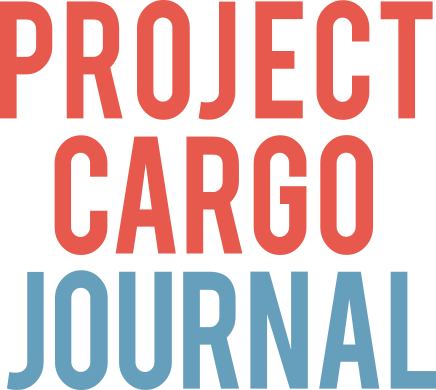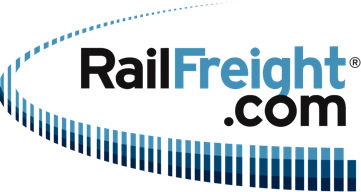Simplifying global procurement
The Trent Group is offering the industry something new with its TrentGO global eMarketplace for container crane and cargo equipment spare parts and services.

TrentGO is a dedicated online platform for the ports industry where equipment operators can set up profiles for their equipment and invite suppliers to be part of a collaborative selling process.
TrentGO was developed after a chance meeting in Singapore led Trent Group owner and CEO Director Jon Arnup to spot an opportunity to simplify and change the way port operators procure spare parts. Through years of experience in the industry, Arnup knew that spare parts purchasing can be complicated, prone to errors and lacking transparency.
Furthermore, even with the largest global terminal operators, spare part purchasing is highly fragmented and largely controlled by individual terminals and regional offices. By contrast, vessel operators use platforms like ShipServ to manage spare parts procurement online through an eMarketplace. ShipServe alone manages US$3 billion in procurement per year for vessel operators.
Arnup was convinced terminals could benefit from a platform that goes beyond simple online purchasing. Licensing a common user platform application, Trent launched TrentGO in 2021 as an online eMarketplace for spare parts.
Parts catalogues
Using TrentGO, terminals build their own equipment-specific parts catalogues, complete with pictures, from original equipment specifications and documentation. Where this information is out of date or missing key elements, Trent is able to help terminals structure and cleanse their data to identify part numbers and other details needed to source alternative, compatible spare parts. When parts are required, terminals can use the TrentGO eMarketplace to immediately obtain three or more quotes from different vendors offering the same part for their exact requirements.
Each item in the terminal’s parts catalogue shows a quotes breakdown of the total price into parts and last-mile logistics costs, so terminals can see where their parts are coming from and the real logistics cost in the procurement process. TrentGO charges a small fee per transaction only on the part price itself.
“Getting TrentGO up and running quickly during the pandemic was our priority, as it was clear that COVID was a catalyst to look for ways to better manage procurement online,” Arnup said.
In 2023 he made the decision to bring in additional investors and develop its own platform. IGO Solutions, which is headed by owner and director Jay Pandya, took a stake in TrentGO and developed the new in-house TrentGO platform that is now running live. TrentGO is now built specifically for the container terminal industry.
Being in control of development has allowed Trent to shape the eMarketplace to address the challenges in global spare parts procurement specific to the ports industry. These are very familiar to the Trent team. Arnup is a mechanical engineer with a decade of previous experience as Director of Global Engineering at DP World. The wider Trent team has experience purchasing over US$3 billion of port equipment.
TrentGO leverages that experience to help terminals build accurate parts catalogues, identify a variety of sources and suppliers, and set transaction and platform fees according to part types and services provided. “We are not just a parts seller, we understand ports and equipment,” Arnup said.
Trent can help terminals identify sources for spare parts by identifying new suppliers and different spare parts options they may not have considered, especially for interchangeable components like brakes, wire ropes, electrical cables, and a host of other mechanical and electrical parts. With TrentGO, terminal operators can still select original OEM spare parts, but they can also quickly and easily find the same or alternative parts from other sources. Trent is available to advise on options and provide references for terminals that want to look at what others are doing.
Terminal operators can also use TrentGO to drive standardisation across their facilities and get visibility into spare parts spending that is currently managed on a port-by-port basis. There are a lot of opportunities to standardise that terminals are missing today, Arnup said. Some of this is driven by different interpretations of options in specifications across facilities.
Standardise and consolidate
Arnup gives the example of one customer that had eight terminals purchasing wire ropes from four different OEMs to two separate specifications for the same application. Wire ropes are a commodity where volume plays a large role in pricing. Instead of purchasing different wire rope in multiple orders of 10,000m, Trent identified an opportunity to standardise and consolidate purchasing into a single 100,000m order while staying within specifications for the equipment.
“This information will also help better inform a corporate group responsible for buying cranes and help them improve standardisation across the portfolio. The same can then be applied to multiple component and part types,” Arnup said.
Using TrentGO has helped terminals achieve considerable savings in parts procurement, including up to 74% in wire ropes and tyres; 15-22% in sensors, switches and bearings; and 11-23% in brakes and energy chains.
In response to market demand, TrentGo is currently developing CO2 footprint information for spare parts to inform the decision making process. This will eventually include the CO2 from shipping and logistics, and the goal is to offer customers the opportunity to choose lower-emission shipping services.
There is a lot to come but Arnup is pleased with how TrentGO has progressed so far. TrentGO competes directly with OEM online spare parts sales, but reverses a traditional online transaction so the buyer is leading the process.
The biggest obstacle Arnup has found to getting terminal operators to transact on TrentGO has been pushing through the internal commitment required to accept the use of the eMarketplace for transactions. Terminal operators typically manage purchasing through an ERP system like SAP or Oracle, which “doesn’t fit neatly” with innovations like TrentGO, Arnup said.
Internal process integration issues can take months to resolve, but once a company pushes to drive change and terminals start transacting “we see repeat orders and a flurry of work” he added.
Looking further ahead Trent is eyeing how terminals can leverage ChatGPT and other AI tools to help speed up and simplify the equipment specification process. Getting AI to specify even an STS crane “is very realistic”, Arnup considers.
Trent has experimented with using ChatGPT to produce an STS crane specification. The result was not perfect as the application needs much more additional data, “but it’s not as far away as many will think”. That data is available, where OEMs and terminals use digital twins, and all of that data can be made available to the AI model.
Data such as that seen and used in BIM (Building Information Models) also enables access to standards and specifications used in the spare parts procurement process to be fed into the crane design and build process.
The potential is there, Arnup added, for much more effective crane specification to be largely automated. Individual terminal businesses could start the process with terminal and market-specific requirements before handing over to a head office for the rest of the process to be managed centrally, saving a great deal of time and money in the process.




